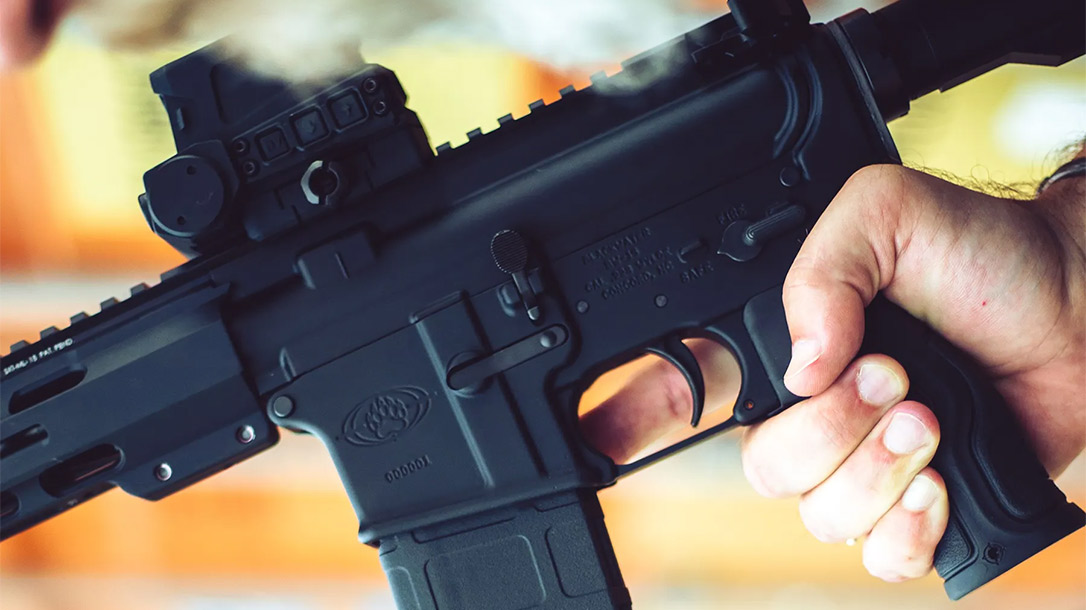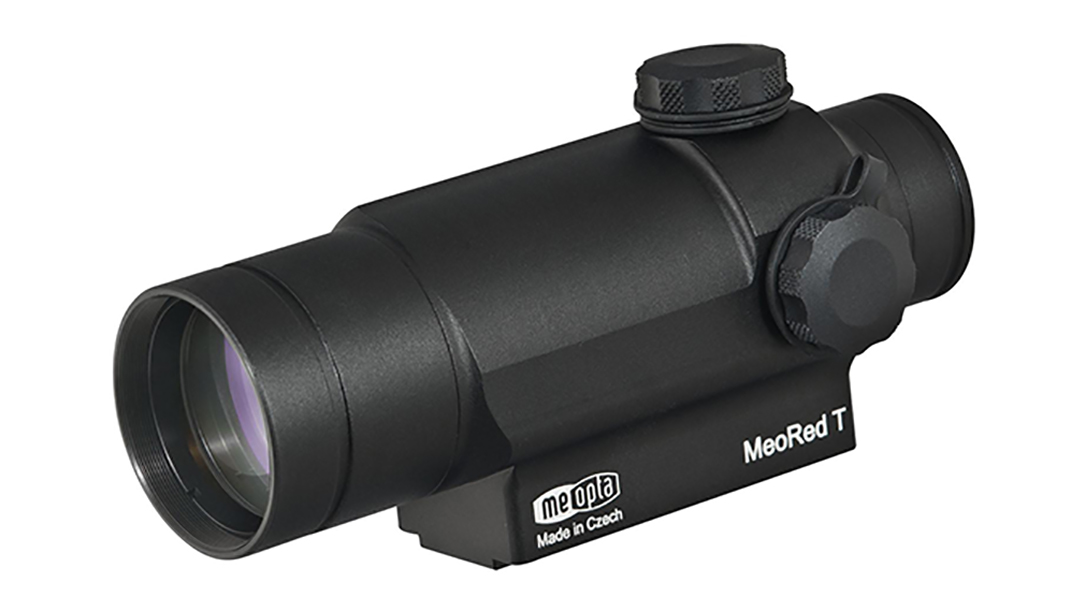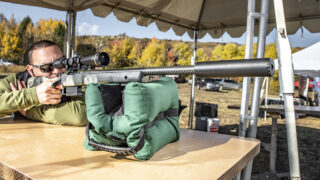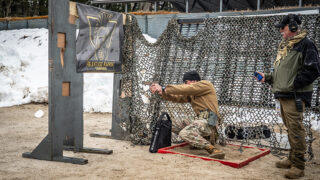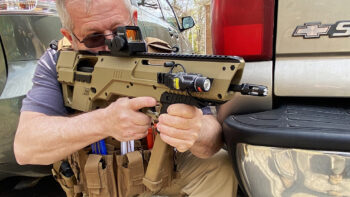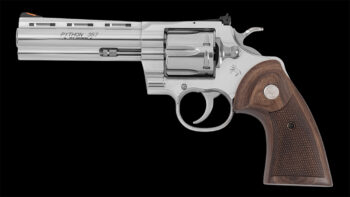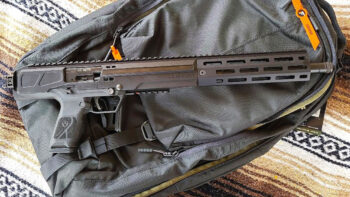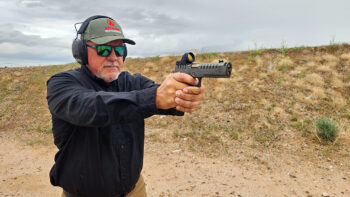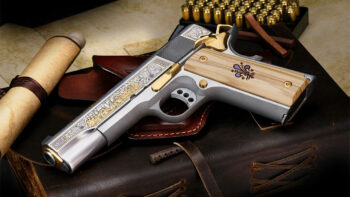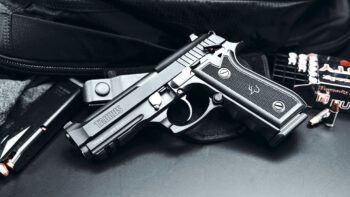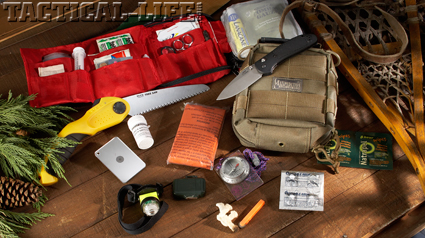
For the last couple of decades, most of my hiking has been of the day-hike variety with my wife. Although we’re only out during daylight hours, the weather around here can change fast, so a good-size day pack is necessary. More or less by definition, our cell phones don’t have service where we hike. These places are pretty well off the beaten path. That’s why we like to carry a good outdoor survival kit.
What’s a Ditty Pouch? Old School Speak for Outdoor Survival Kit
Gun Review: Beretta Air Pistol Replicas from Umarex, Gletcher & Swiss Arms
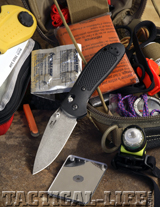 Ever since my first hike I’ve carried a first-aid kit and a ditty pouch. They’ve evolved into a survival kit that I’ve added to and subtracted from often over the years. Both these kits are about 7x5x2 inches, and they are always with me on any hike. I also carry water, Zone Bars, appropriate clothing, insect spray, knives, reading glasses, pad and pen, hand sanitizer, toilet paper, and a topo map of the area and any trail maps available.
Ever since my first hike I’ve carried a first-aid kit and a ditty pouch. They’ve evolved into a survival kit that I’ve added to and subtracted from often over the years. Both these kits are about 7x5x2 inches, and they are always with me on any hike. I also carry water, Zone Bars, appropriate clothing, insect spray, knives, reading glasses, pad and pen, hand sanitizer, toilet paper, and a topo map of the area and any trail maps available.
What’s in the Bag, Man?
I let survival expert Doug Ritter critique my selection of essentials. Doug is one of the world’s leading experts on survival of all kinds. He runs Equipped To Survive, a meaty website chock-full of superb survival advice and gear reviews.
First-Aid Fodder
I bought my first-aid bag at an outdoor store. I’ve stocked it myself with:
- QuickClot Combat Gauze
- Cutter snake bite kit
- Waterproof tape
- Ace bandage
- Syringe
- Gauze bandage
- Antibiotic ointment
- Lanacane
- Aspirin (for the dogs)
- Excedrin (for me)
- Amoxicillin
- Percocet
- Steri-Strips
- Moleskin
- Superglue
- Various sizes of sterile and adhesive pads
- Band-Aids
- Alcohol wipes
- Benedryl tablets
- Magnifying glass
- Tweezers
Survival Stuff
My ditty/survival bag is a pouch that contains:
- Surefire E1 light
- Fox 40 whistle
- A small AAA-powered LED light
- 50 feet of nylon cord
- Wax-soaked cotton balls
- My old Silva Boy Scout compass
- Mylar space blanket
- Two ¾-inch nylon straps (for attaching extra gear to our packs, but also they make good tourniquets)
- Waterproof matches
- A few yards of flagging tape
- Generic butane lighter
- Several 5-inch cable ties
- Extra shoelaces
- Portable Aqua Plus water purifier tablets and neutralizer
- A generic signaling mirror
- Two black 30-gallon trash bags (emergency ponchos)
- Several 8-penny nails
- Ranger beads (for keeping count of paces)
- Coghlan magnesium fire starter
You can see that I’m paranoid about fire starting. Also, as I list these items, I can see that a good lightweight headlamp would be beneficial and I wonder which one Doug recommends.
No Outdoor Survival Kit is Complete Without Knives
I always have at least three knives with me: a pen knife and a 4-inch defensive knife, as well as a 4-inch, two-bladed Buck Alpha CrossLock folding knife/saw combination. On the bottom of my Kelty Redwing is mounted a Cold Steel Recon Tanto in a Kydex sheath that Tim Wegner made for me and that I can reach easily when the pack is on my back. Finally, I usually carry a light-weight revolver too (a Colt Agent), since coyotes have become a nuisance to some hikers around here recently, particularly during whelping season.
So Doug, whadda you think?
Doug Ritter Critiques My Outdoor Survival Kit:
I am always a little concerned when the majority of survival gear is carried in a pack. Too often backpacks or fanny packs are irretrievably lost in the process of getting yourself into a survival situation. Carry the most essential survival gear on your person.
Items to Ditch
- Get rid of the Cutter snake bite kit, the use of which has been contraindicated by all reputable medical sources for years.
- Invest in some of REI’s Stormproof matches, which are both waterproof and wind resistant and provide the greatest amount of incendiary material.
- The Coghlan’s Magnesium bar and flint require two hands. Swap this with the compact Spark-Lite. It can be used one-handed, and, with its included waterproof Tinder-Quik tinder, has never failed to start a fire for me, regardless of conditions.
- The Mylar space blanket is obsolete. It is barely big enough to be useful, falls to pieces once punctured—which occurs way too easily, and is noisy as all get out. A couple years ago Adventure Medical Kits introduced their oversized polyethylene Heatsheets Emergency Blanket and now a bivy sack, all of the same material. These are a whole order of magnitude better product.
- Potable Aqua, an iodine-based water disinfectant tablet will not work reliably for Cryptosporidium, a growing problem. I prefer Chlorine Dioxide tablets. Many are concerned that this disinfectant’s instructions specify a four-hour treatment. You need to know that is only relevant to very dirty and very cold water.
- A metal signal mirror is about the worst possible choice. Adventure Medical Kits’ Rescue Flash is an affordable and readily available option with good performance.
- I carry nothing but LED lights. Headlamps offer huge benefits in an emergency when you need both hands. For a lightweight and compact LED headlamp, suggestions would be my own Doug Ritter Special Edition eQ Hand-Free Multi-Light by Essential Gear or the Petzl e+LITE.
- Two words: duct tape.
- Get a 406 MHz Personal Locator Beacon. In a serious emergency, nothing will more reliably get you or your family rescued quicker.
Knives Out
- You’ve got no shortage of knives, any of which would likely be adequate and, with multiple choices, you’ve definitely got redundancy covered. Having said that, all have some issues from my perspective. Your fixed blade, a 7-inch tanto style with a chisel grind, would not be my first choice. I lean towards a more versatile and traditional drop point shape and normally keep my blades under 6 inches. The folders, likewise, leave a bit to be desired, and none have a finger guard of any sort, which I prefer for safety. The saw blade of the Buck Crosslock is a real asset, though it is optimized as a hunter’s bone saw, not for wood. I carry a saw combined with other useful tools in a good multi-function tool. That also gives me my redundant knife blade(s) for my RSK Mk3 fixed blade and RSK Mk1 folder.
Time to Upgrade my First Aid and Survival Equipment
I took all of Doug’s suggestions except for the expensive PLB. I got a Heatsheets blanket, Rescue-Flash mirror, and a Spark-Lite/Tinder-Quik kit from Adventure Medical Kits. Adventure Medical Kits make a lot of “ready to go” solutions for your outdoor survival kit, and can be ordered on Amazon. I upgraded to Portable Aqua Chlorine Dioxide tabs from Wisconsin Pharmacal. The lights were replaced by a Doug Ritter Edition Photon Micro-Light. The eQ2 LED headlamp from Essential Gear has a bright 3.5-lumen light that also flashes to attract attention. Essential Gear also makes the Doug Ritter model that has an easy-to-find yellow body and a super-bright LED lamp.
Knife Swap
I made Doug’s RSK Mk1 folder my standard hiking folder. This knife really is an exquisite utility knife with its wide-chord drop-point 3.44-inch S30V blade in a Benchmade Griptillian handle, and I’ve always loved it. I then added a 4-ounce, 6-inch Buck folding saw to my pack, replacing the CrossLock. Doug’s RSK MK3 is an expertly designed survival and woods knife with a similar 4.5-inch S30V blade. The generic lighter was upgraded to a windproof piezo-electric Windmill lighter also from Essential Gear. I added some duct tape and a few feet of coiled utility wire. I eliminated the Cold Steel Recon Tanto. Finally, I upgraded my pouch to a Maxpedition FR-1 pouch.
Now when I hike, I feel prepared and confident knowing that one of the world’s leading survival experts has helped me design my personal survival kit.

















